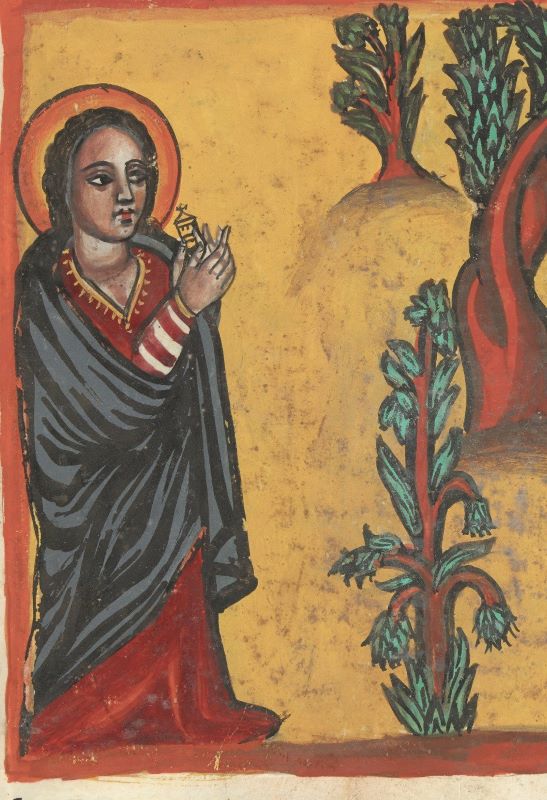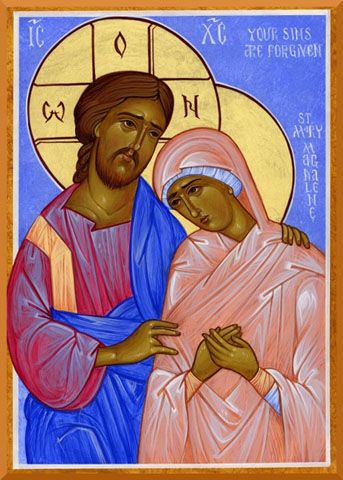When I was a “Woman of the Week,” a few readers asked me to keep them updated on my studies at Harvard Divinity School. This is a reflection on one of the texts that struck me in my first semester as a Master of Divinity student. This fall, I encountered the early Christian text, the Gospel of Mary, in a course entitled, “Orthodoxy and Heresy in Ancient Christianity.” We analyzed the discourse of orthodoxy and heresy, and considered how the earliest followers of Christ in Christianity’s first centuries addressed their differences and similarities. Looking closely at the diversity of early Christianity through its literature helps me to understand and consider what was at play and at stake in the processes that shaped Christianity and led to one church, one creed, one lineage, and a closed canon by the 4th century. Hearing this diversity of voices can offer us something of value today.
The Gospel of Mary is generally believed to have been composed in the 2nd century in Greek, but it “reflects a stream of interpretation reaching far back” into the first century of Christianity.[i] Unfortunately, there are pages that are missing. What has survived of the gospel opens in the middle of a post-resurrection discussion between Jesus (the Savior) and the disciples. After the Savior departs, the disciples are distressed and do not understand the teaching. Mary Magdalene steps in to comfort them. She shares the Savior’s teaching that she received from him in a vision about the ascent of the soul and the practices believers must engage in this life in order to attain salvation. The text is arguably an elaboration of John 20:19-23.
Early Christians explored different perspectives on issues such as the nature of sin and salvation, the role of women, and the value of prophetic authority. As Dr. Karen King explains, “History, as we know, is written by the winners. In the case of early Christianity, this has meant that many voices in these debates were silenced through repression or neglect.”[ii] Although the Gospel of Mary was not included in the Christian canon, we can still appreciate it, value it, and draw inspiration from it. The text has offered me an additional perspective on how early Christians understood gender and spiritual authority. Here, in the Gospel of Mary, women are not excluded from spiritual leadership and authority. Mary, a favored disciple of Jesus, provides spiritual insight, comfort, and eschatological teaching to the male disciples. Both Andrew and Peter challenge Mary’s teaching, with Peter in 10:3 representing the position that limits Christian leadership and teaching to the authority of men. As a contrast, the text advocates for and affirms leadership and authority that is not contingent on gender but rather on spiritual qualifications. The text encourages me to imagine the possibilities for women’s spiritual leadership in our tradition, including the revitalization of the historic female diaconate in the Orthodox Church, and to also recognize and amplify other ministries that women already undertake every day in the Church.


The Gospel of Mary also prescribes a spiritual practice that I have found useful to reflect on as I continue to develop and shape my practice as an Orthodox Christian. While the text encourages readers to look both inward to one’s divine self within and outward to the likenesses of the divine in the world, it also encourages an ethical practice that gazes outward at the world with a healthy suspicion. In Moral Grandeur and Spiritual Audacity, Jewish theologian Abraham Heschel wrote, “Judaism is both an assurance and an urge,” as it comforts but also prompts believers to advocate for justice in the world. The Gospel of Mary provides a similar assurance and urge to its readers. It assures humans who discover their true self and divest from materiality that they will achieve salvation.
However, the text also urges for something more. We can sense the urgency with the exclamation of “Anyone with two ears able to hear should listen!...[Anyone who] thinks should consider (these matters)!” When the Savior warns the disciples not to lay down rules beyond what he has determined, the warning can be interpreted as casting equal suspicion on laws laid down by others in the world. We must be “on [our] guard” for deceptive rules and laws. Thus, calling out injustice in the world is a divine imperative in the Gospel of Mary. This imperative helps me to consider how I want to exist in the world as an Orthodox Christian, as it echoes Jesus’s radical example in the four canonical Gospels of challenging inequality and injustice as part of an inclusive ministry that embraced the outcast, marginalized, and exploited.
I hope others will enjoy reading the Gospel of Mary and may discover something within it for themselves.
[i] Karen L. King, The Gospel of Mary of Magdala: Jesus and the First Woman Apostle (Santa Rosa, California: Polebridge Press, 2003), 41.
[ii] King, The Gospel of Mary of Magdala: Jesus and the First Woman Apostle, 6.

Dina is a first year Master of Divinity student at Harvard Divinity School where she is focusing on women, gender, and sexuality in Christianity, but also in other religious traditions. She is an advocate for the revitalization of the female diaconate in the Orthodox Church. Before beginning her graduate studies, Dina worked at CBS News for nearly eight years, and most recently as an Associate Producer for 60 Minutes for four years.


